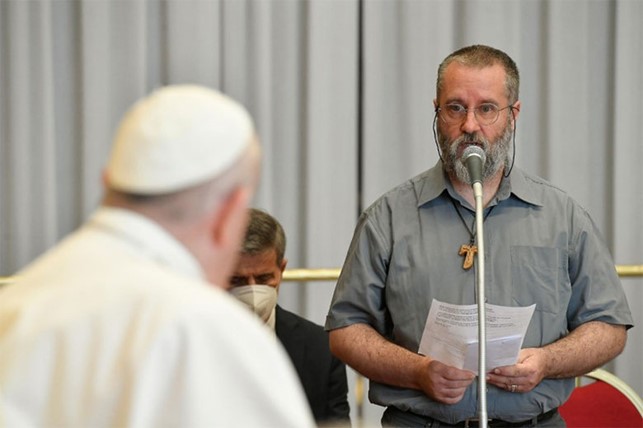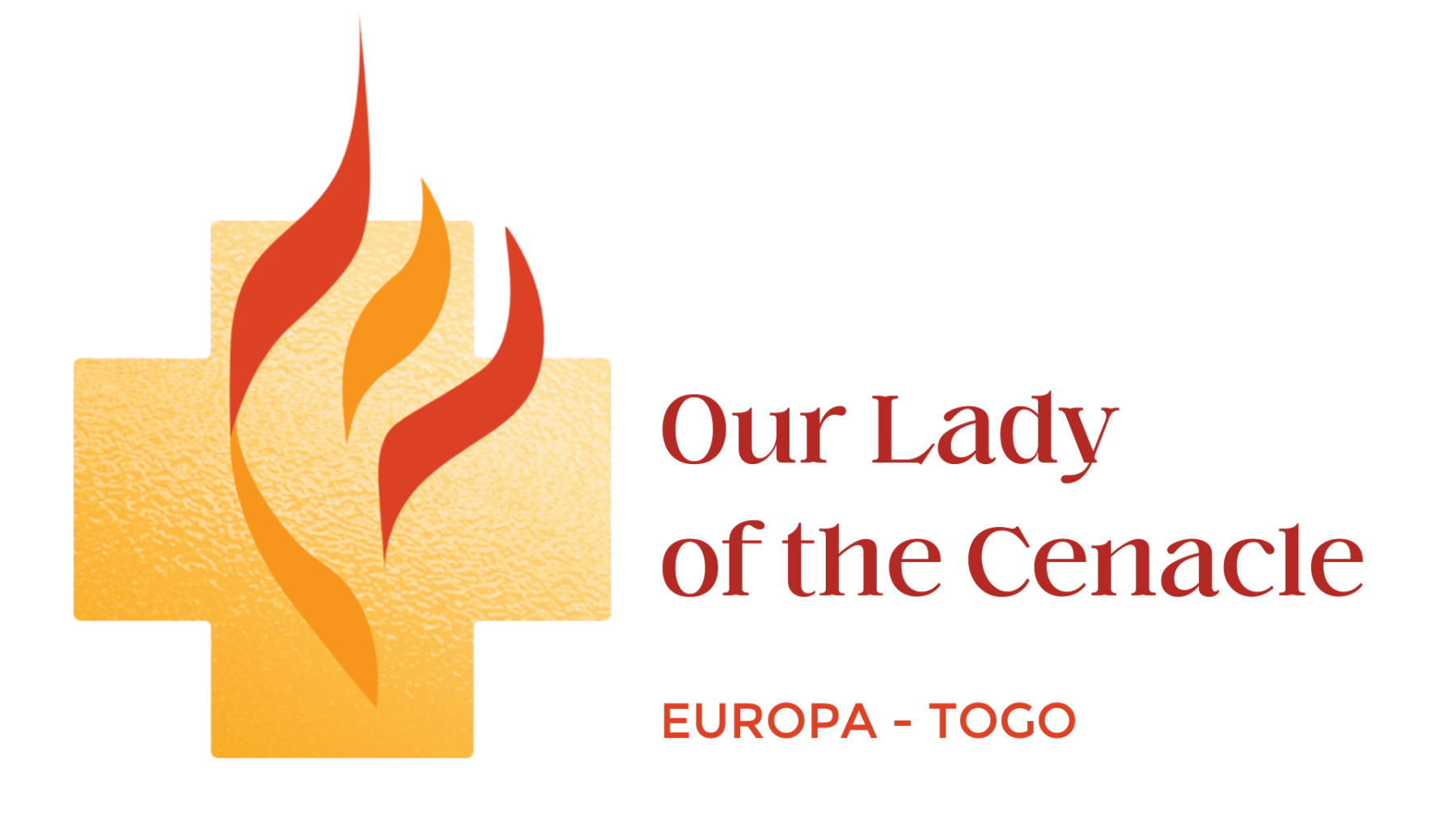Married with four children and working for the parish, Andrea received an invitation to become a deacon in a large Roman parish. Although this may seem a novel idea, the reason lies in the desire of the diocese of Rome to re-restablish an already used model in the early days of Christianity to revitalise the parish.
The choice fell on Andrea, a clerk in the diocesan offices, and his family.
He has been a permanent deacon since 2008 and, together with his wife Laura, had long been considering moving to live with his family near a convent, in order to combine the search for God with service to his neighbour. Surprisingly, the children were happy with the idea of moving and even more so when the family was invited by the diocese to move to a parish where their father would be a deacon.
This happened in September 2018 in the parish of St Stanislaus which, located in the Cinecittà area, is to become a diaconia.
Andrea works in the morning in the diocese and in the afternoon he dedicates himself to his parishioners and collaborators. The team includes a priest, who comes to the parish to celebrate the...
Married with four children and working for the parish, Andrea received an invitation to become a deacon in a large Roman parish. Although this may seem a novel idea, the reason lies in the desire of the diocese of Rome to re-restablish an already used model in the early days of Christianity to revitalise the parish.
The choice fell on Andrea, a clerk in the diocesan offices, and his family.
He has been a permanent deacon since 2008 and, together with his wife Laura, had long been considering moving to live with his family near a convent, in order to combine the search for God with service to his neighbour. Surprisingly, the children were happy with the idea of moving and even more so when the family was invited by the diocese to move to a parish where their father would be a deacon.
This happened in September 2018 in the parish of St Stanislaus which, located in the Cinecittà area, is to become a diaconia.
Andrea works in the morning in the diocese and in the afternoon he dedicates himself to his parishioners and collaborators. The team includes a priest, who comes to the parish to celebrate the sacraments, and several deacons. In the morning, his wife Laura is the secretary, taking care of the phone calls and visits.
With Andrea, the whole family is sent on mission. Indeed, at the time of the presentation of the new deacon to the community, Andrea and his wife were entrusted with the jug and basin, symbols of service, so that their family would be a witness and stimulate the commitment of all.
WHAT WAS THE REACTION OF THE PARISHIONERS?
After the initial perplexity that made people wonder whether, not having a full-time priest available, they were missing out on something. Then, with time, this novelty intrigued many people and encouraged them to get closer to the Christian community. The figure of the family allowed many to feel better understood.
Andrea’s desire is to create a community in real communion, where people come not only to receive but also to give. The communition desired by this deacon, unusual for Italy, is thus the true communion, the one created, nourished and wanted by God. Thus, every Friday, the parishioners are warmly invited to Eucharistic adoration!
The approach of this deacon and his family is that of humility, as a companion ready to support and encourage the participation of each person, so that the community may live out its different gifts. The intention is that each person should play his or her own role, that stems from his or her personal vocation and talents.
In this sense, in the image of this pioneer parish, the community would be more synodal and the ministries and vocations would each be at the service of the others.
Left: Andrea Sartori with his wife Laura Posani (photo by Stefano Dal Pozzolo / Contrasto – https://m.famigliacristiana.it/articolo/la-nostra-parrocchia-formato-famiglia.htm)

For two reasons.
First of all, this experience has the flavour of a great novelty, of progress in the Church. In fact, the diocese of Rome has simply restored its most ancient practice. Indeed, early Christian Rome was founded on seven diaconies. The first Roman churches were divided between those called Titulus (forerunners of today’s parishes) and the diaconia.
What was and is the purpose of the diaconia? To gather the Christian community of a diocese around charity, to help the sick and those in need. In ancient times, the charity of the diocese was specifically entrusted to deacons who received the first degree of the sacrament of Holy Orders. He is at the service of the animation of diaconia which is proper to the Christian community.
The diocese felt the need to embark on such an experiment not because of a lack of priests, but to try out a new model of parish community life, not centred on the priest, but where everyone feels responsible, collaborates, and is the driving force behind all the activities of the diaconate, with particular emphasis on listening to people who are alone and in need.
THE DIACONATE IN ROME
It was re-established...
For two reasons.
First of all, this experience has the flavour of a great novelty, of progress in the Church. In fact, the diocese of Rome has simply restored its most ancient practice. Indeed, early Christian Rome was founded on seven diaconies. The first Roman churches were divided between those called Titulus (forerunners of today’s parishes) and the diaconia.
What was and is the purpose of the diaconia? To gather the Christian community of a diocese around charity, to help the sick and those in need. In ancient times, the charity of the diocese was specifically entrusted to deacons who received the first degree of the sacrament of Holy Orders. He is at the service of the animation of diaconia which is proper to the Christian community.
The diocese felt the need to embark on such an experiment not because of a lack of priests, but to try out a new model of parish community life, not centred on the priest, but where everyone feels responsible, collaborates, and is the driving force behind all the activities of the diaconate, with particular emphasis on listening to people who are alone and in need.
THE DIACONATE IN ROME
It was re-established in 1982 and there are currently 137 deacons, plus 42 in formation. There is a diocesan council of deacons which includes the wives of three of them, and the formation team is made up of deacons and some of their wives.
Pope Benedict XVI initiated this renewal and spoke of it in his encyclical ‘Deus Caritas est’ and Pope Francis continues to repeat that the poor are at the centre of the life of faith: it is through them that the face of God is best seen.
THE DEACON IN SACRED SCRIPTURE
This initiative of the diocese of Rome brings to mind in particular the deacon Philip who was chosen together with seven others on the initiative of the apostles (Acts 6:1-7). However, it is said of him (Acts 8) that, after the persecutions suffered by the Church in Jerusalem, he fled elsewhere like many other disciples and reached Samaria where, living among the people, he passed on the faith to many.
This choice and this ‘novelty’ for the Church of Rome, seem to us, to be one of the ways to put the family back at the centre of the diaconia and a stimulus to promote synodality in our ecclesial community life.
Article written by Sr Patrizia, Community of Rome (Italy) with the contribution of Salvatore Corpaci (deacon of the archdiocese of Syracuse).
Source : Photo from https://www.romasette.it/il-papa-ai-diaconi-permanenti-ne-mezzi-preti-ne-chierichetti-di-lusso-ma-servi-premurosi/
FOR MORE INFORMATION:
https://www.youtube.com/watch?v=9eQCCmg-JzE
https://www.osservatoreromano.va/it/news/2021-06/quo-137/santita-cosa-si-aspetta.html

